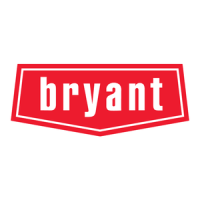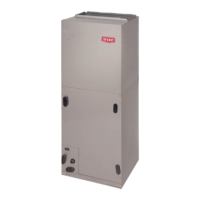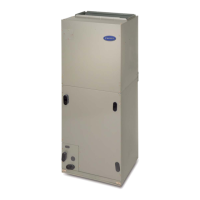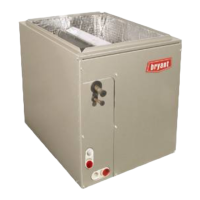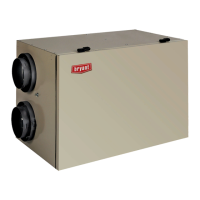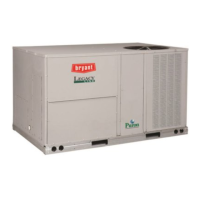1
Installation Instructions
HRVBBLHA
HRVBBSVU
HRVBBLVU
HEAT RECO VERY V ENTIL A TO R
A05260
Fig. 1 --- HRVBBLHA Conventional Unit
A92268
F i g . 2 --- H R V B B S V U C o m p a c t U n i t
A92377
Fig. 3 --- HRVBBLVU High Efficiency Unit
Note: Read the entire instruction manual before starting the
installation.
SAFETY CONSIDERATIONS
Installation and servicing of this equipment can be
hazardous due to mechanical and electrical components.
Only trained and qualified personnel should install, repair,
or service this equipment.
Untrained personnel can perform basic maintenance
functions such as cleaning and replacing air filters. All other
operations must be performed by trained service
personnel. When working on this equipment, observe
precautions in the literature, on tags, and on labels
attached to or shipped with the unit and other safety
precautions that may apply.
Follow all safety codes. Installation must be in compliance
with local and national building codes. Wear safety glasses,
protective clothing, and work gloves. Have fire extinguisher
available. Read these instructions thoroughly and follow all
warnings or cautions included in literature and attached to
the unit.
Recognize safety information. This is the safety--- alert symbol
!
!
When you see this symbol on the unit and in instructions or
manuals, be alert to the potential for personal
injury.Understand these signal words; DANGER,
W ARNING, and CAUTION. These words are used with the
safety ---alert symbol. DANGER identifies the most serious
hazards which will result in severe personal injury or death.
WARNING signifies hazards which could result in personal
injury or death. CAUTION is used to identify unsafe
practices which may result in minor personal injury or
product and property dam age. NOTE is used to highlight
suggestions which will result in enhanced installation,
reliability, or operation.
INTRODUCTION
The Heat Recovery Ventilator (HRV) is used to exchange
indoor stale air with outside fresh air. The HRV unit is
equipped with a special heat recovery core which transfers
sensible heat between the fresh incoming air and stale
exhaust air.
It is required to locate the HRV in a conditioned space.
Special attention should be given to condensate drain, duct
application, balancing HRV, and locating unit for easy
access and routine maintenance. The cross---flow design
core allows entering and leaving air streams to transfer heat
energy without mixing (See Fig. 14, and 17---24).
LOCATION
Step 1.—Inspect Equipment
Move carton to final installation location. Remove HRV from
carton taking care not to damage unit. Remove all
packaging and inspect unit for damage. Remove parts bag
from inside unit. File claim with shipping company if
shipment is damaged or incomplete. Check to make sure
HRV unit matches Fig. 1 through 3 and 4 through 6.



